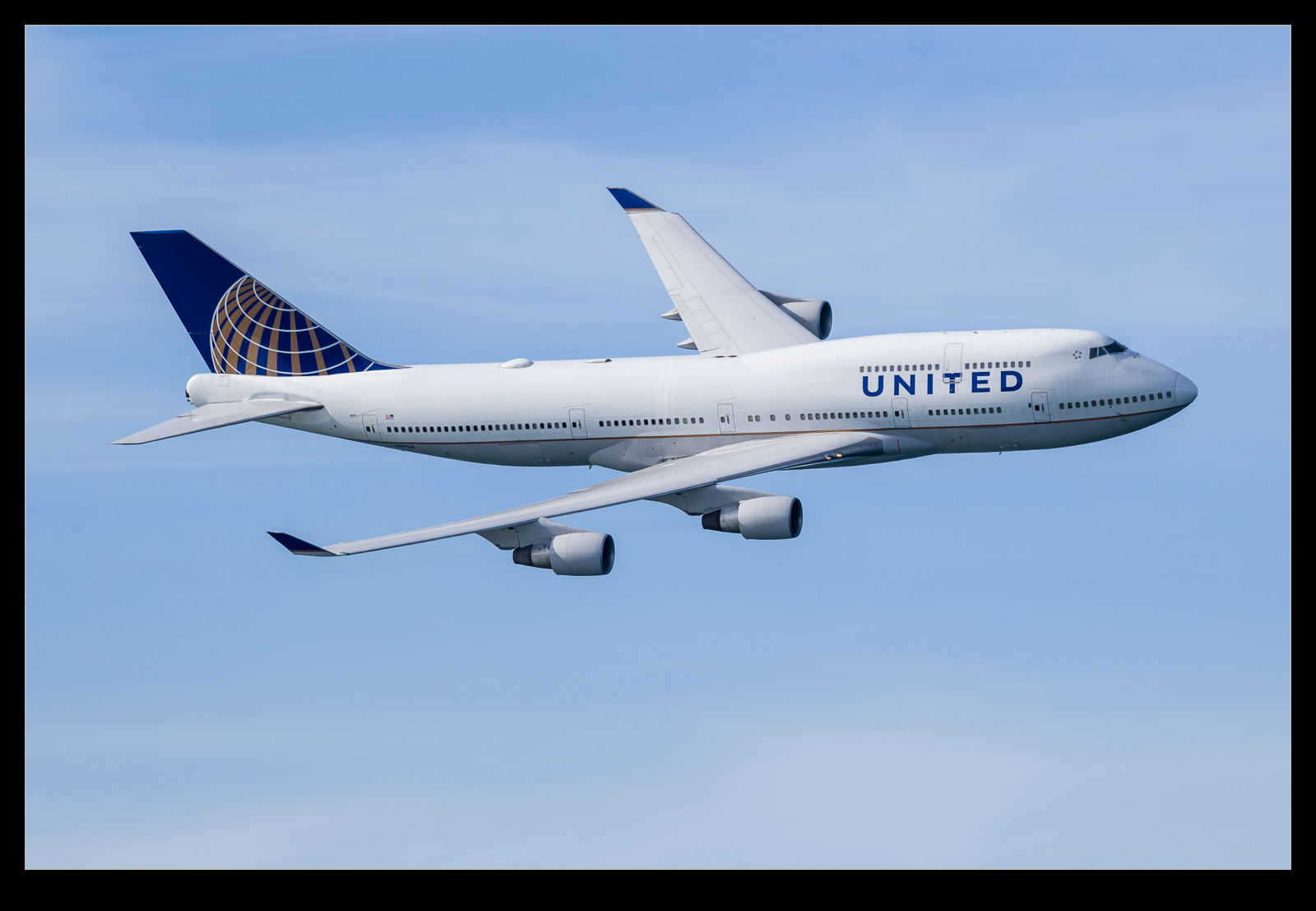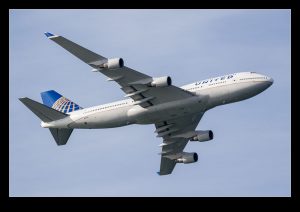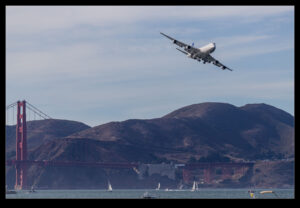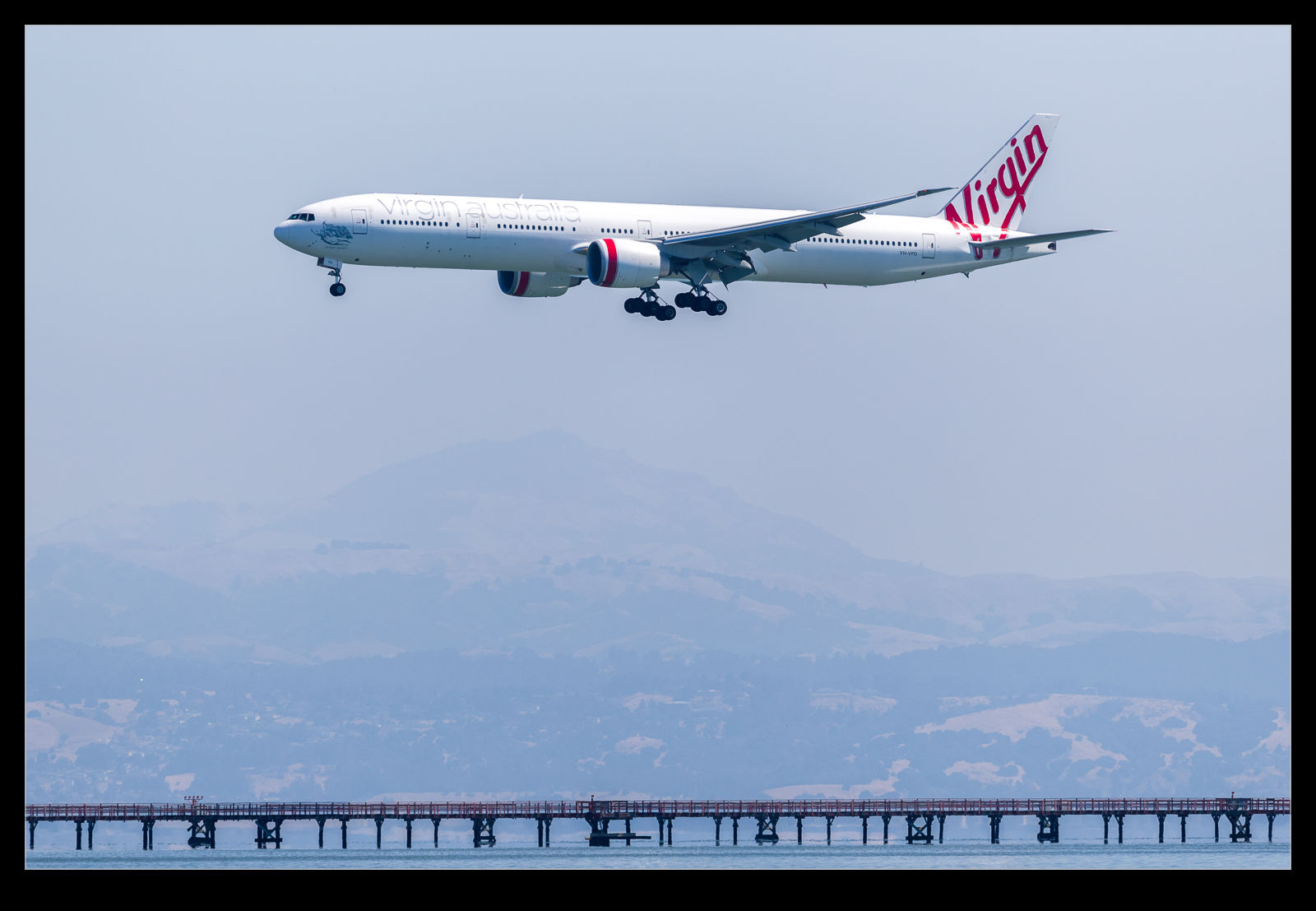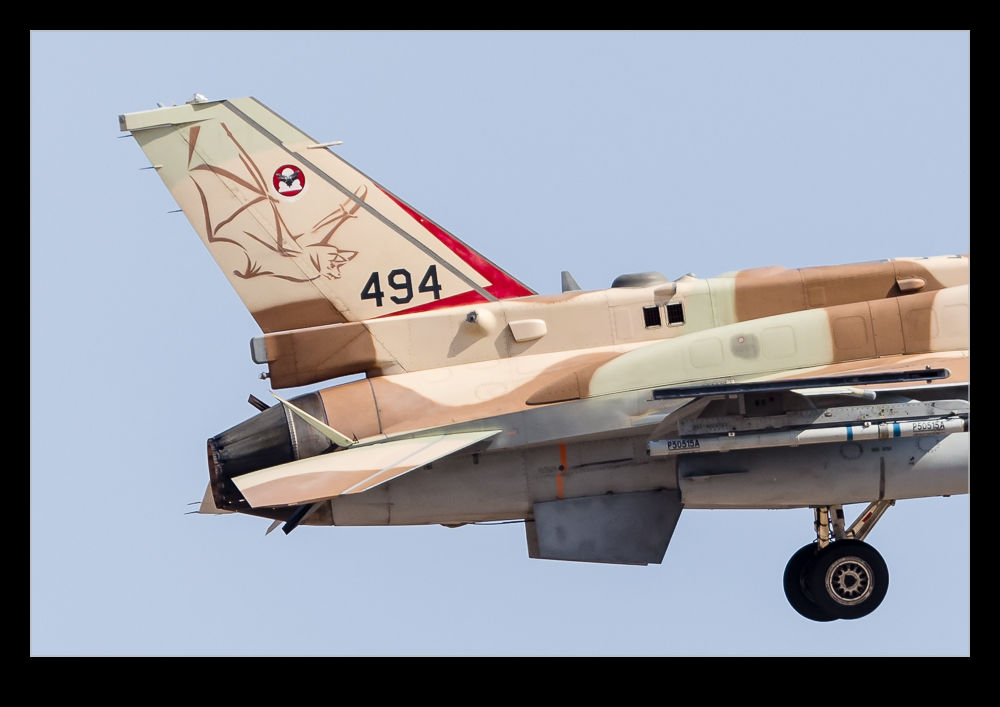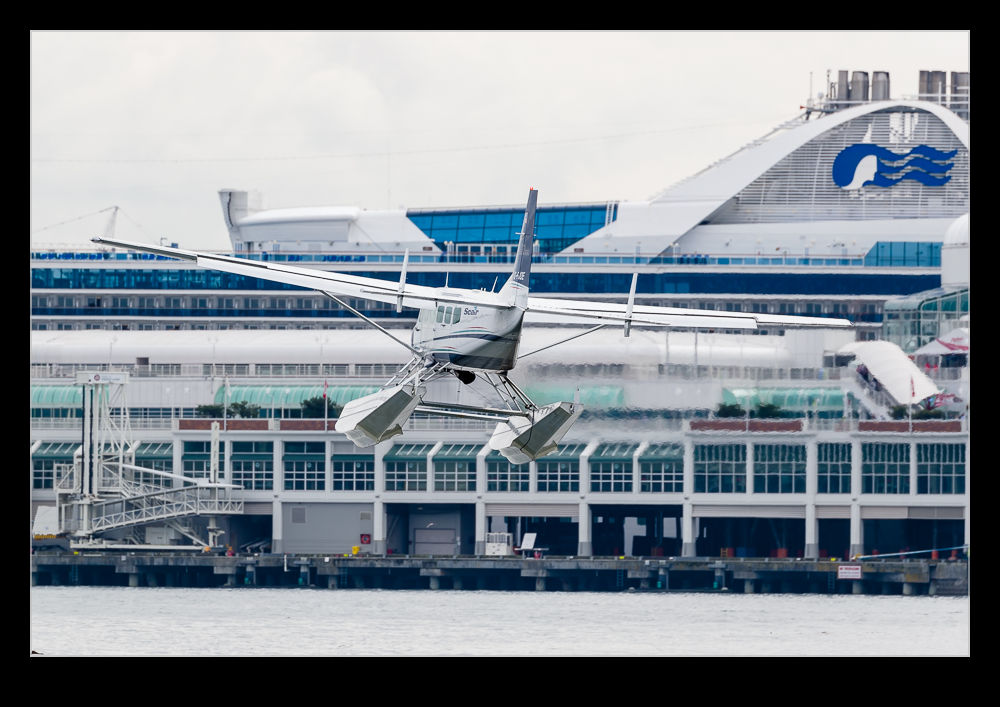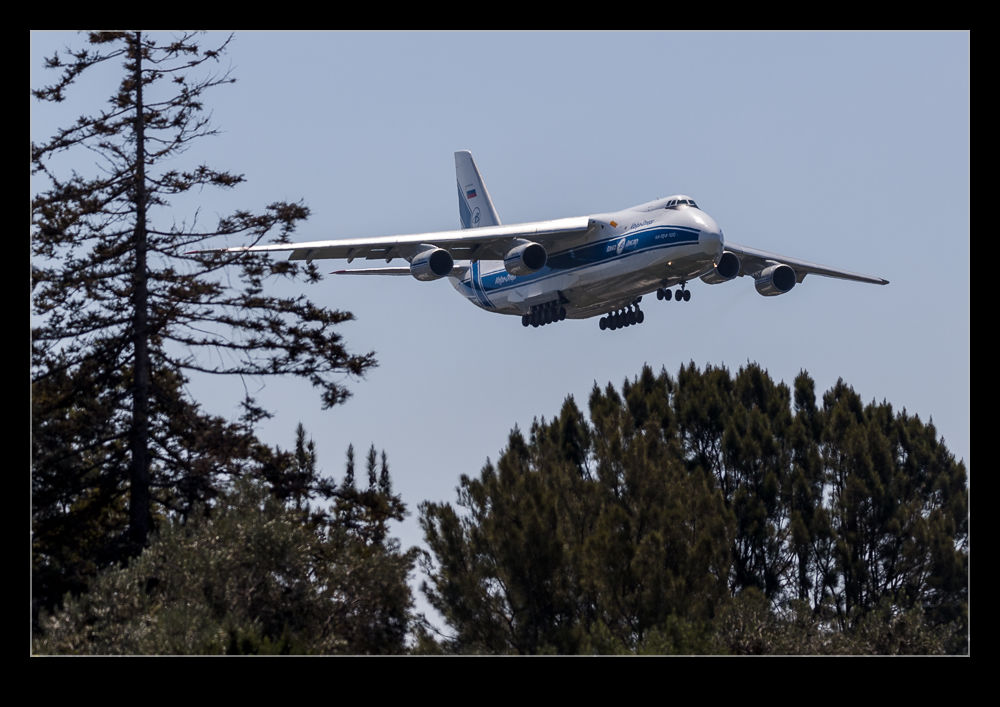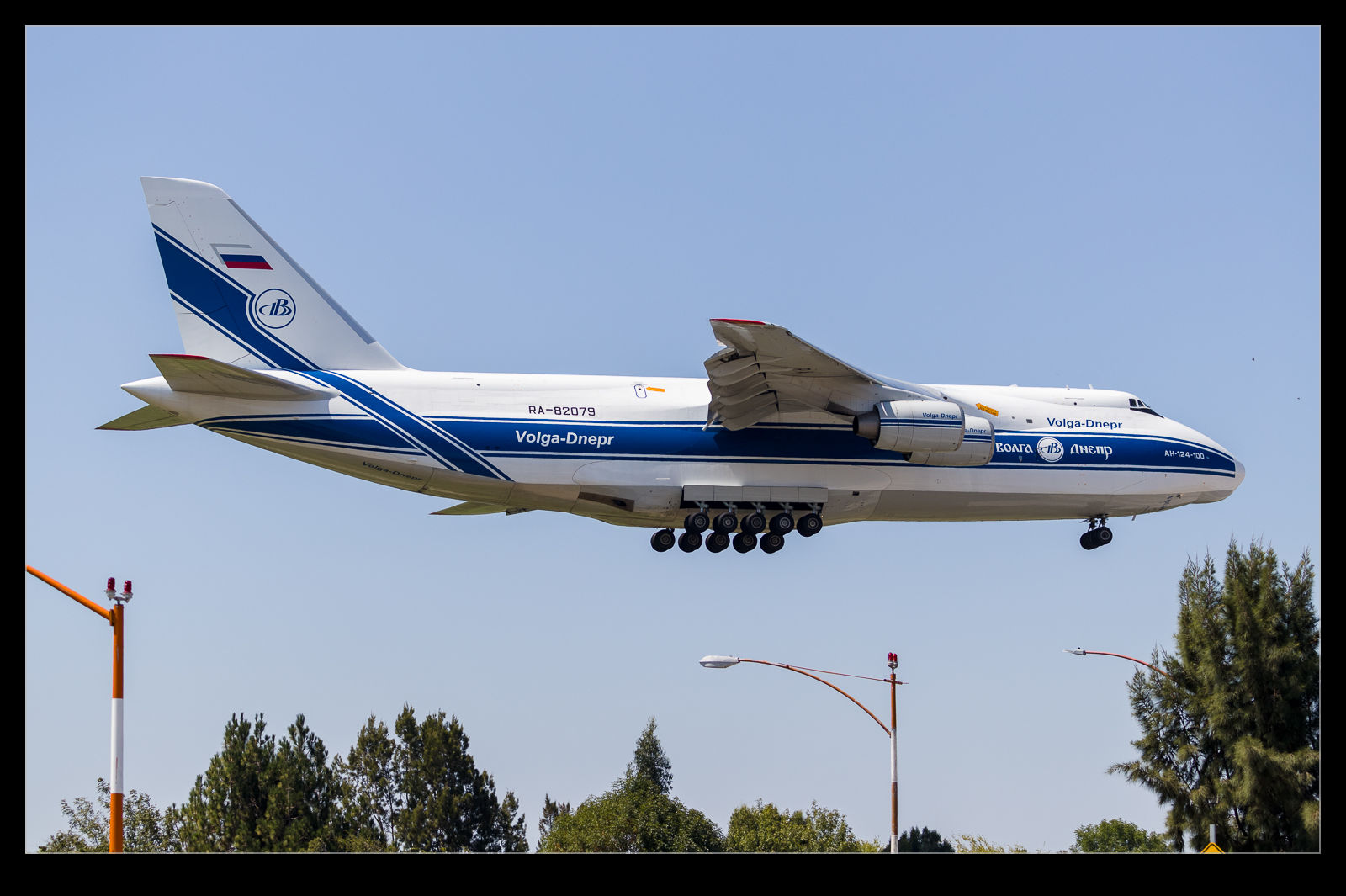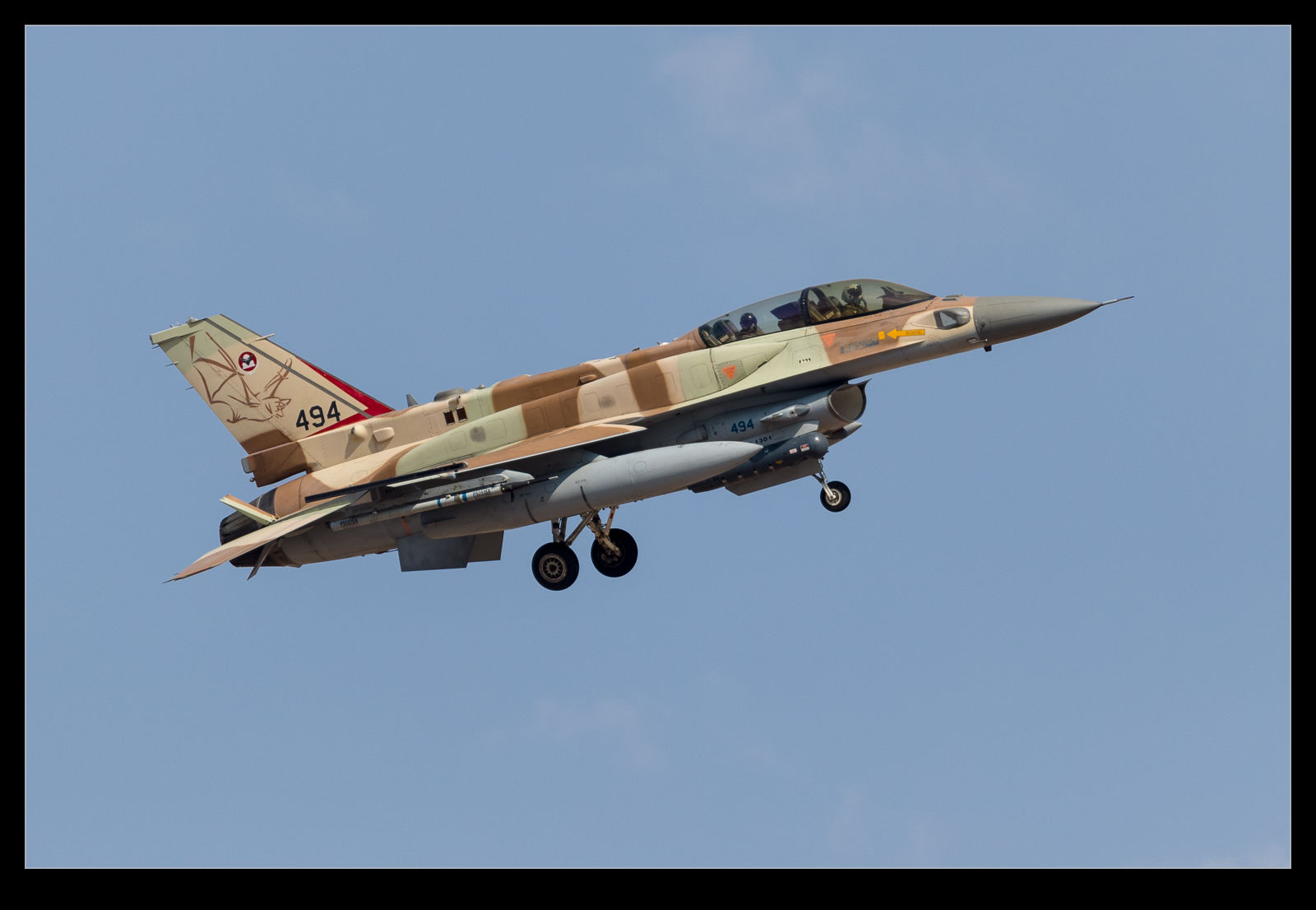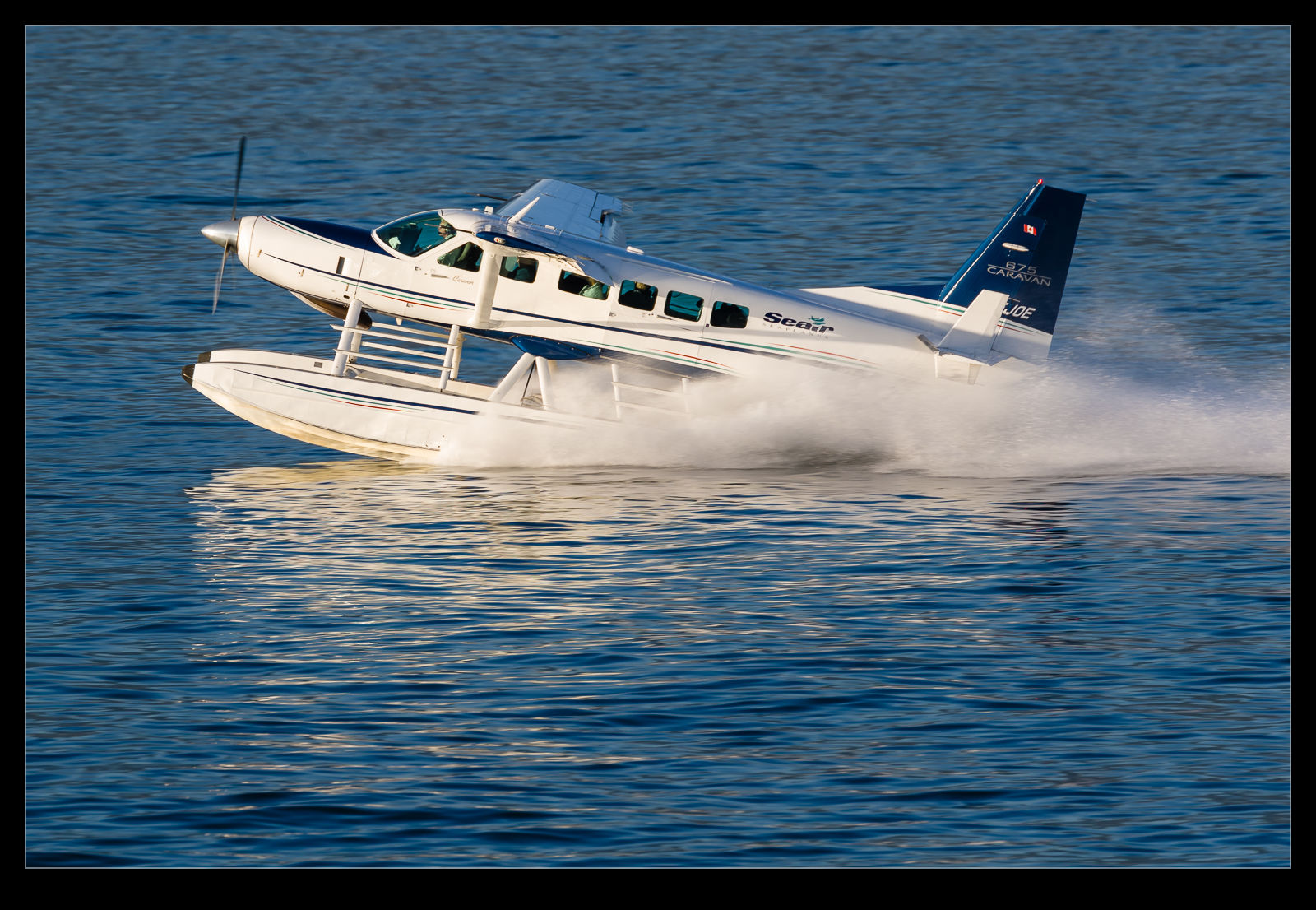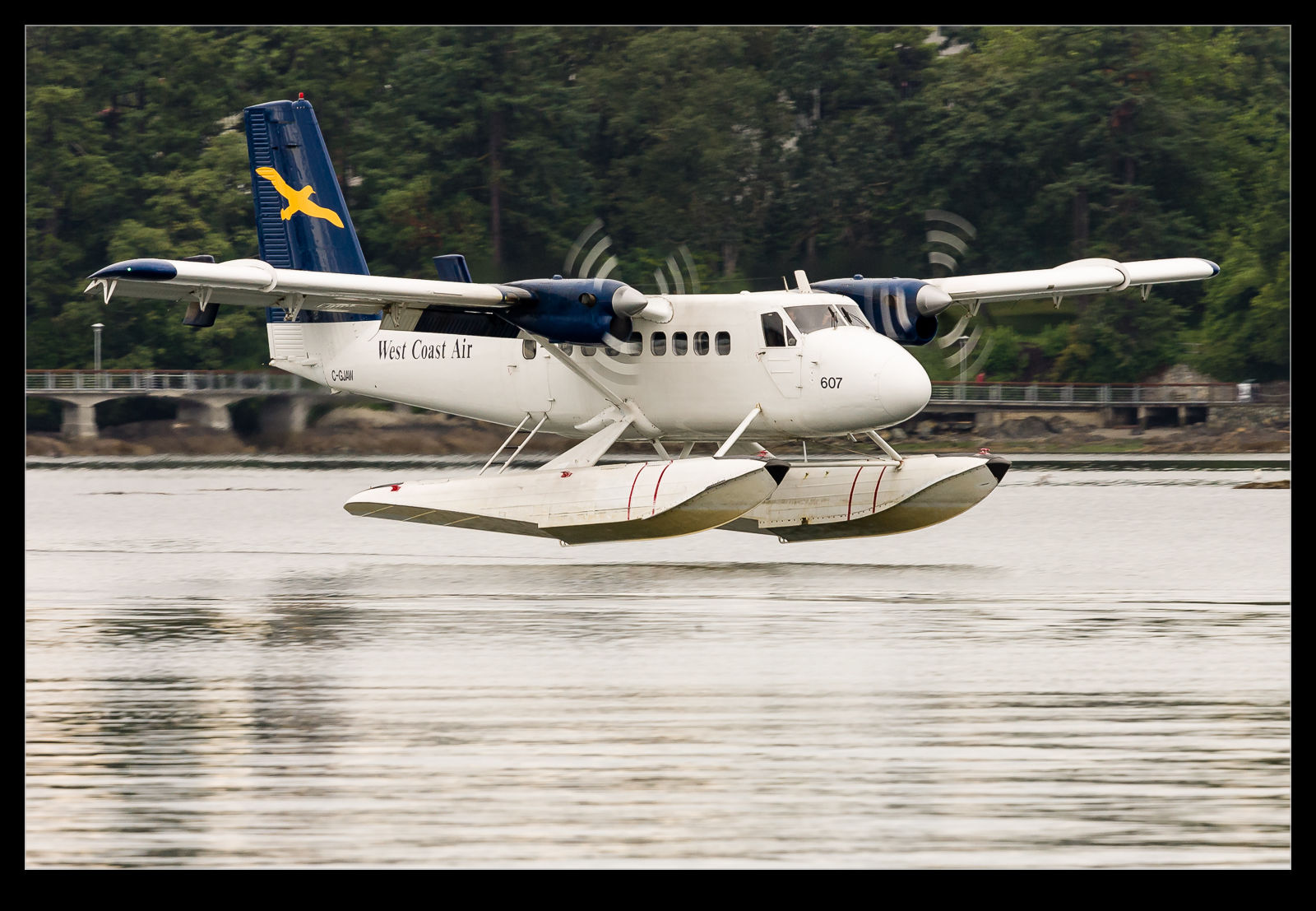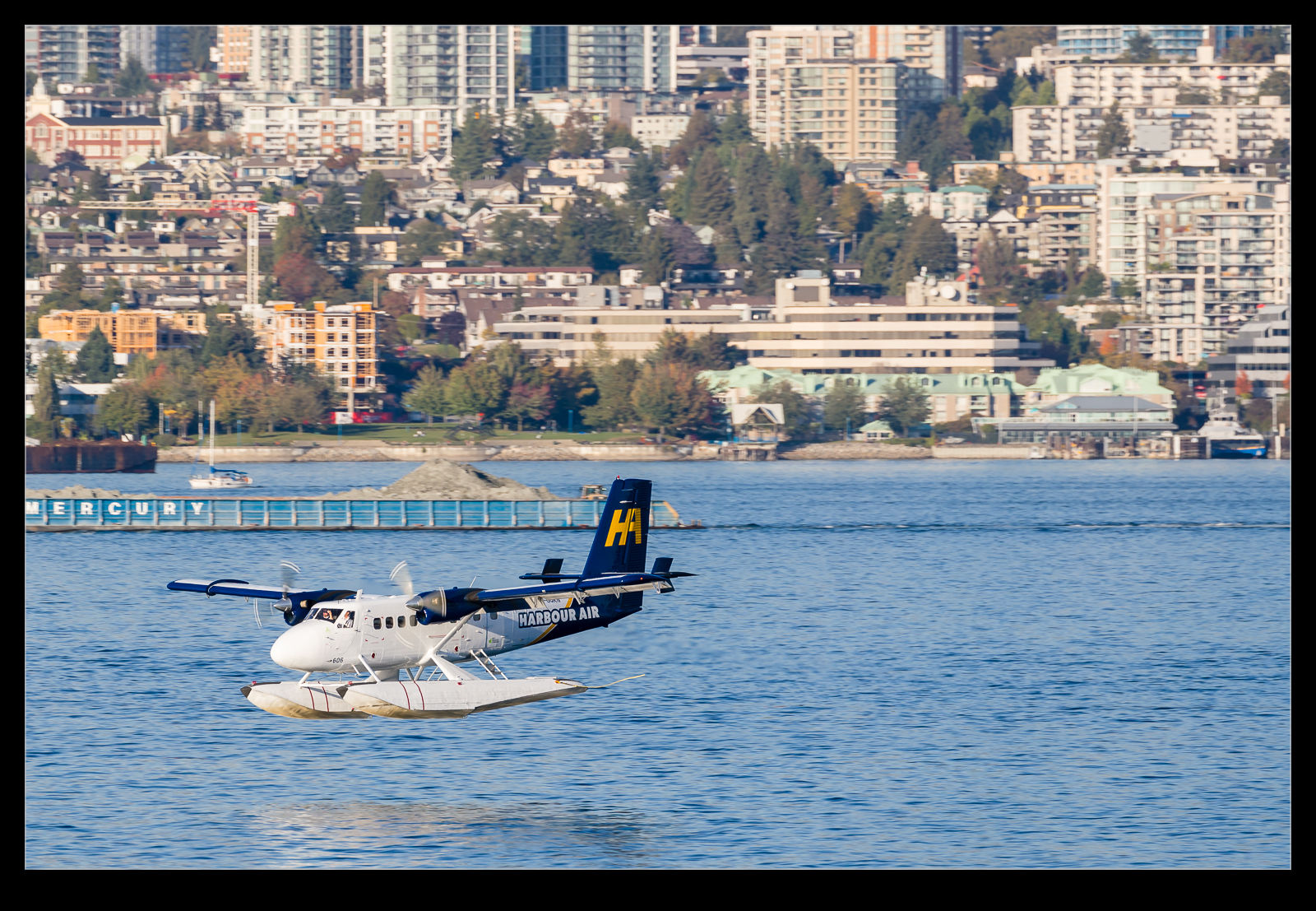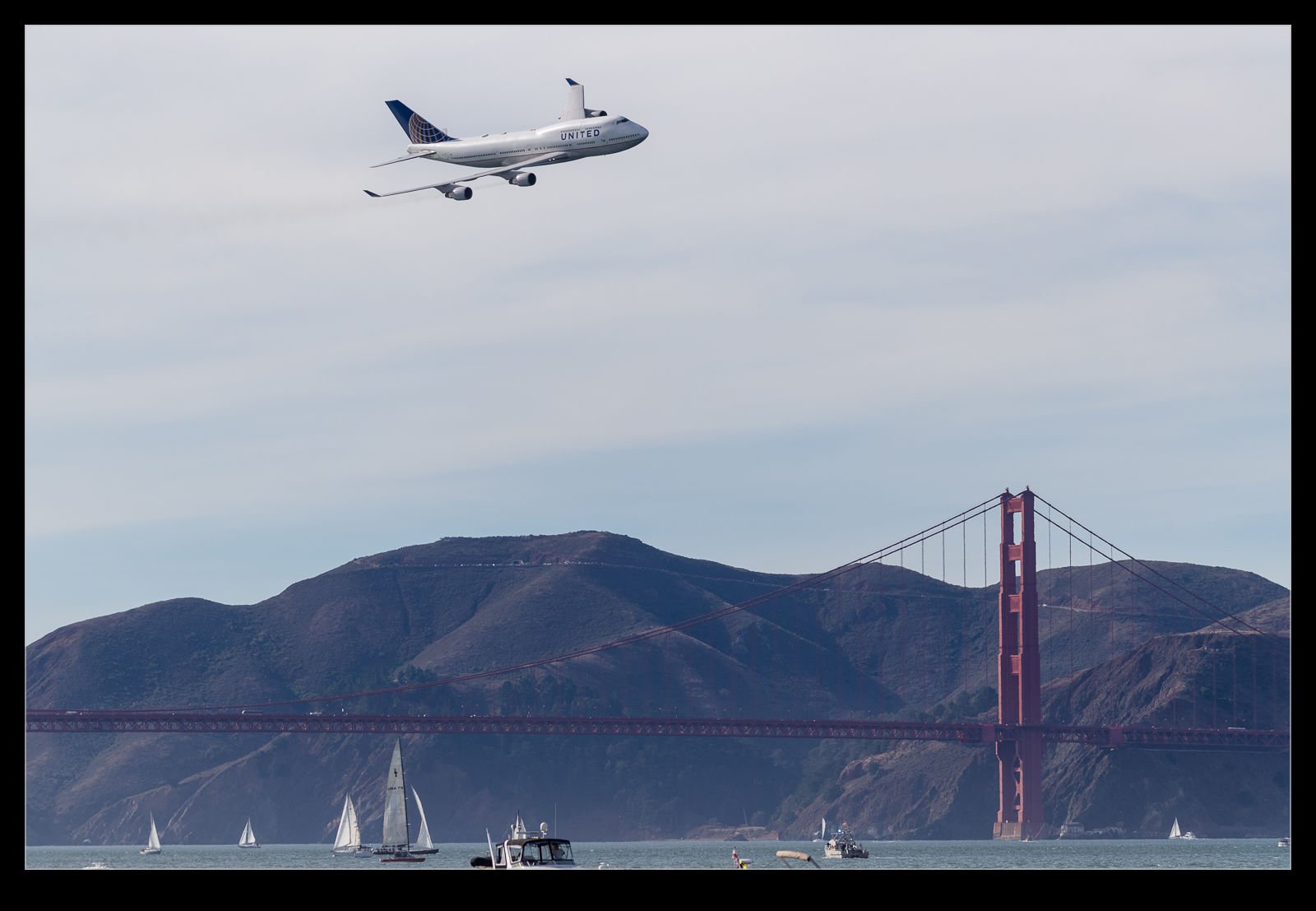 Air shows include a lot of planes that are regular performers. However, some shows manage to include something a little different and having a big airline with a local hub will help. The Chicago Air and Water Show would feature American Airlines jets when I lived there. San Francisco Fleet Week gets United to bring a jet. This year they brought a 747-400 to the flying display. Seeing a big jet like this thrown around the bay is really cool. Whether it is flying low over the bay or turning in near the Golden Gate Bridge, this is something you don’t get to see too often.
Air shows include a lot of planes that are regular performers. However, some shows manage to include something a little different and having a big airline with a local hub will help. The Chicago Air and Water Show would feature American Airlines jets when I lived there. San Francisco Fleet Week gets United to bring a jet. This year they brought a 747-400 to the flying display. Seeing a big jet like this thrown around the bay is really cool. Whether it is flying low over the bay or turning in near the Golden Gate Bridge, this is something you don’t get to see too often.
Tag Archives: aircraft
Cal Bears Travel In Style
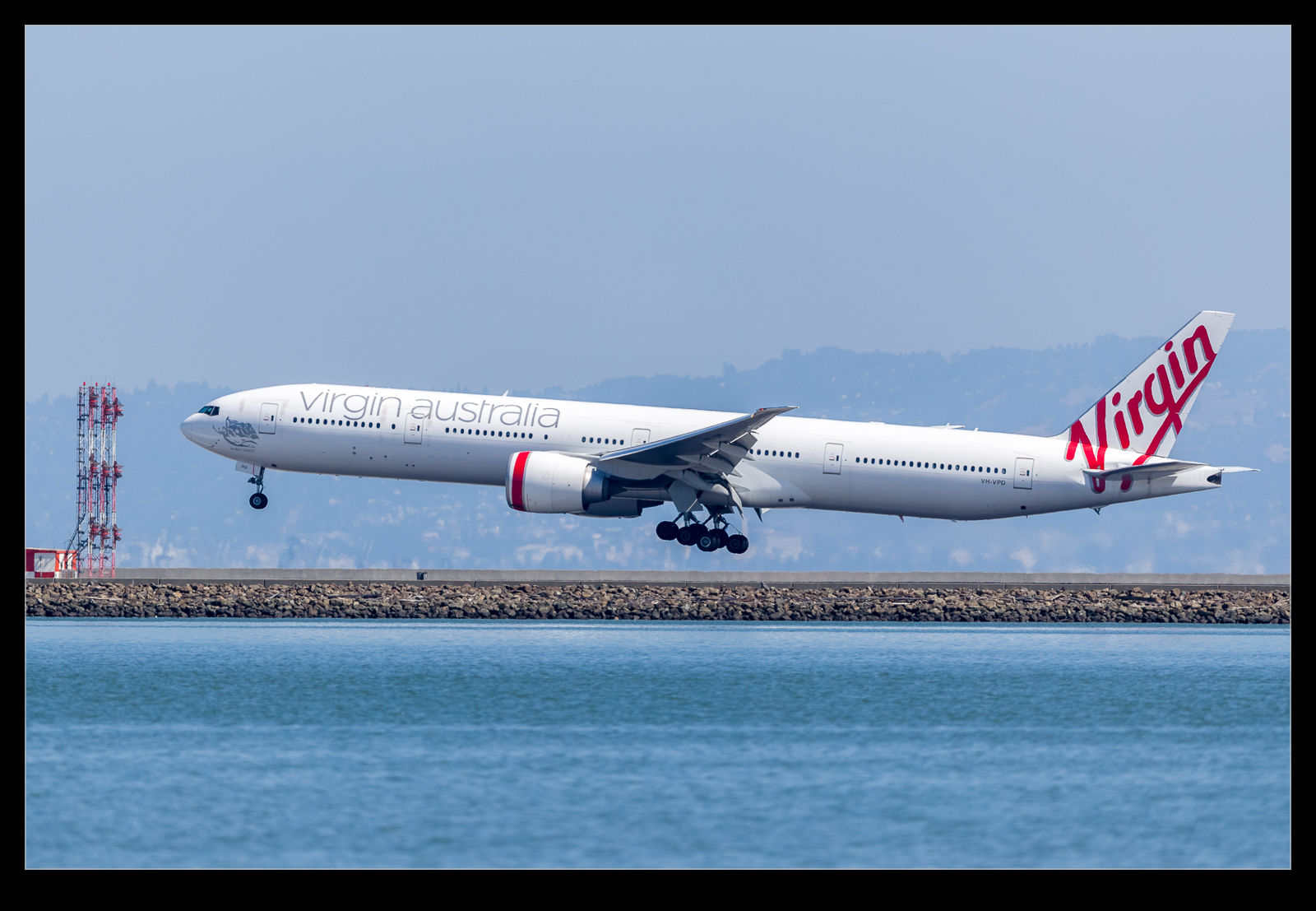 The college football season included a special game at the beginning of the season. The game was scheduled to take place in Sydney Australia rather than the US. Apparently, the NCAA is trying to increase interest in the sport in other countries and hosting a game in Australia was part of the plan. One of the teams was the Cal Bears. To get to Australia and back they chartered a jet for the team and support personnel. Given the number of people involved, it was cheaper than flying commercially.
The college football season included a special game at the beginning of the season. The game was scheduled to take place in Sydney Australia rather than the US. Apparently, the NCAA is trying to increase interest in the sport in other countries and hosting a game in Australia was part of the plan. One of the teams was the Cal Bears. To get to Australia and back they chartered a jet for the team and support personnel. Given the number of people involved, it was cheaper than flying commercially.
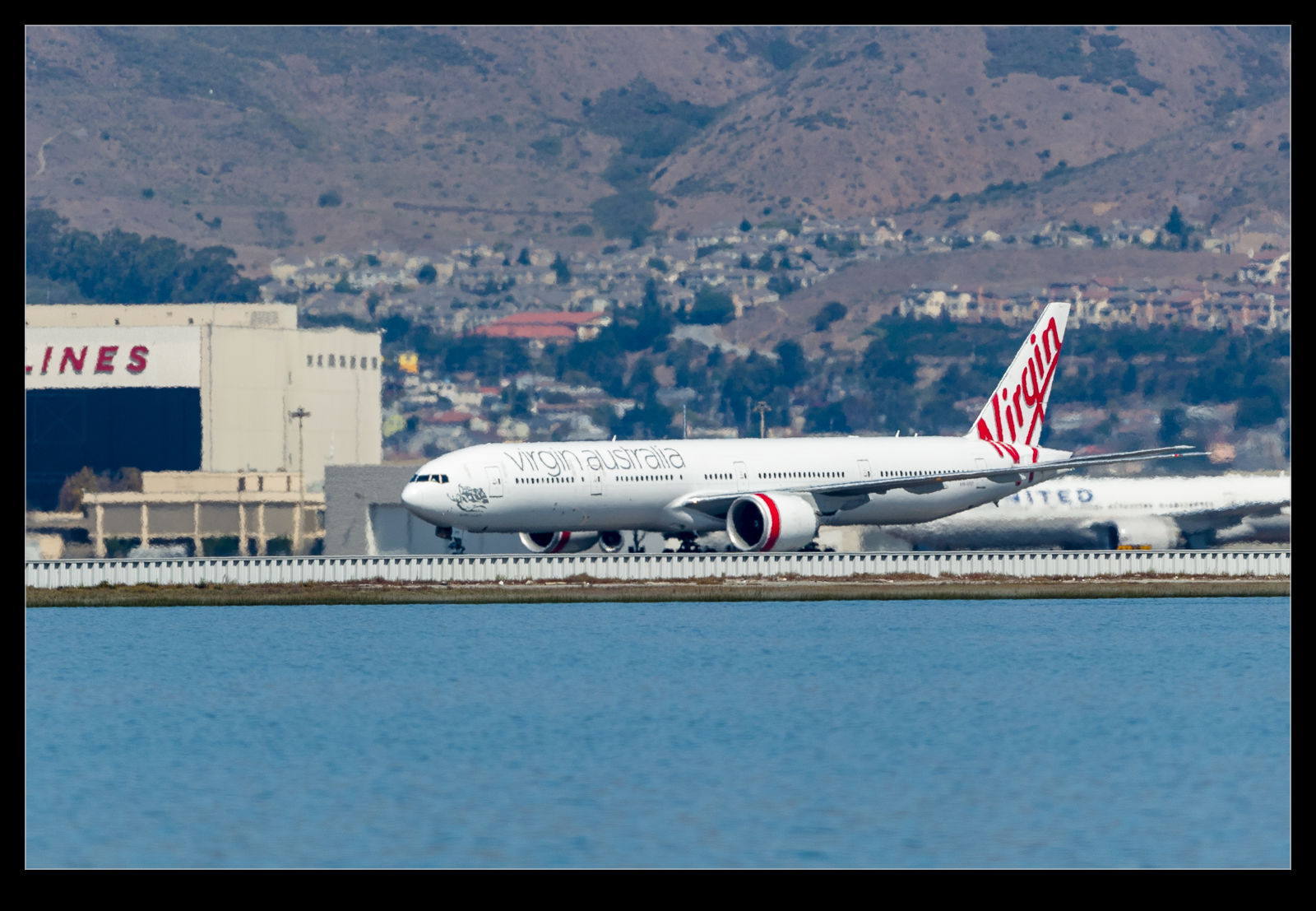 They chartered a jet from Virgin Australia in each direction. The outbound leg was a jet that had made the LAX flight. Instead of flying the return, it positioned to SFO for the outbound flight. They then repeated the process in reverse after the game. I missed the departure rotation but I was there for the return journey. I may have shot Virgin Australia jets before but this was a bit different since they don’t normally appear at SFO. (Cal also has a sponsorship deal with Oakland so this was out of the way for them too!)
They chartered a jet from Virgin Australia in each direction. The outbound leg was a jet that had made the LAX flight. Instead of flying the return, it positioned to SFO for the outbound flight. They then repeated the process in reverse after the game. I missed the departure rotation but I was there for the return journey. I may have shot Virgin Australia jets before but this was a bit different since they don’t normally appear at SFO. (Cal also has a sponsorship deal with Oakland so this was out of the way for them too!)
My First Lear 75
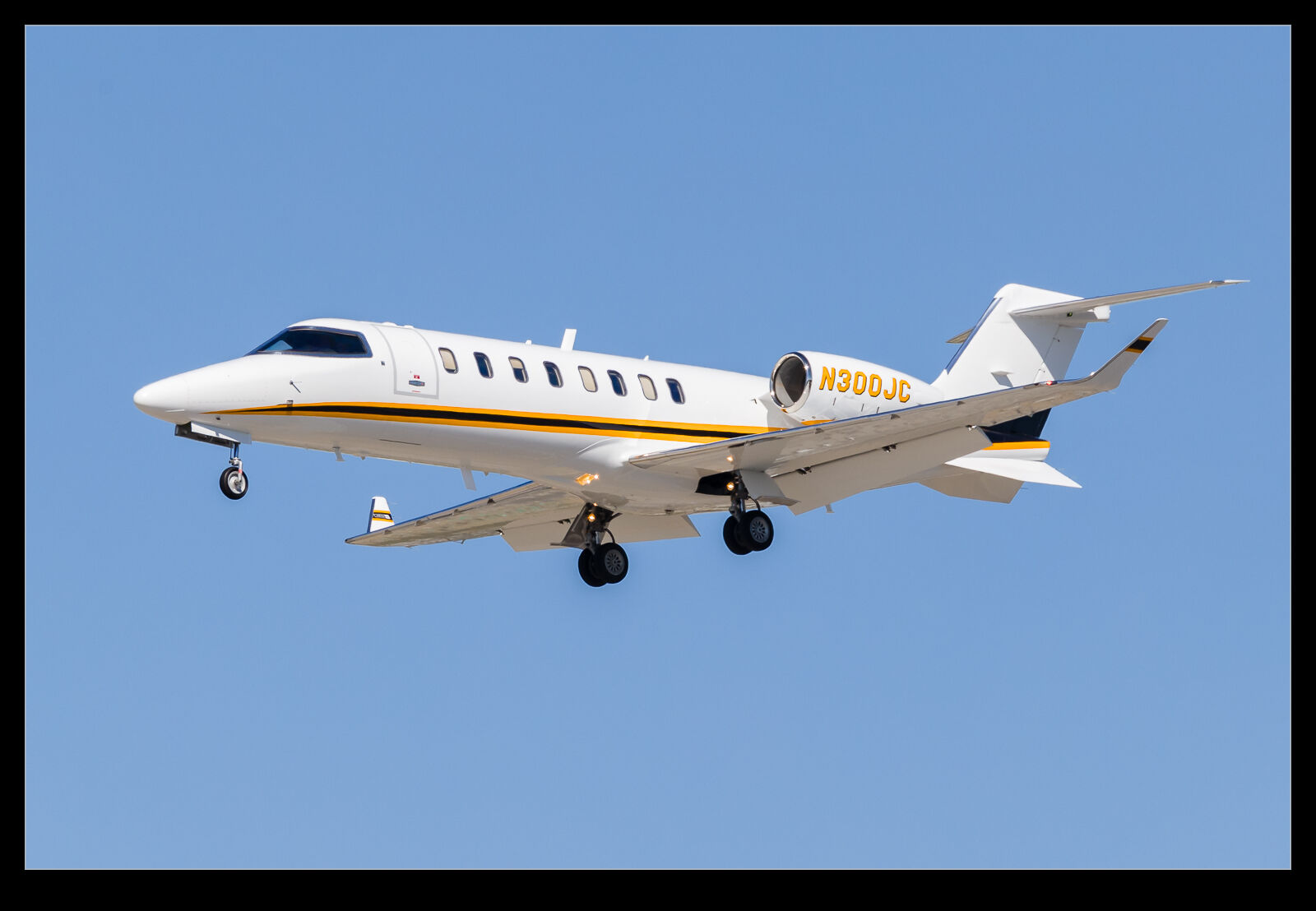 After building on the basic Learjet family for many years, Learjet decided to update things with the Lear 45. This was a new design for them, even if it was based on many of the original Learjet design features. It also spawned a shrink with the Learjet 40. For a while this was a popular jet but, with many manufacturers adding new types to the market, the Lears were beginning to look rather dated and the sales suffered.
After building on the basic Learjet family for many years, Learjet decided to update things with the Lear 45. This was a new design for them, even if it was based on many of the original Learjet design features. It also spawned a shrink with the Learjet 40. For a while this was a popular jet but, with many manufacturers adding new types to the market, the Lears were beginning to look rather dated and the sales suffered.
 The response was the Learjet 75. A new engine and a bunch of revisions were introduced to try and reinvigorate the type and get some more airframes moving out of the production halls at Wichita. The result has been mixed. Some customers were pleased with the new type but the competition is still strong and some customers are not coming back. I hadn’t seen one in the wild until recently when one showed up at San Jose. It is still the same basic airframe so it looks okay (although if you ever get inside one, you will be surprised how cramped it is). Whether it is enough to save the brand, we shall have to wait and see.
The response was the Learjet 75. A new engine and a bunch of revisions were introduced to try and reinvigorate the type and get some more airframes moving out of the production halls at Wichita. The result has been mixed. Some customers were pleased with the new type but the competition is still strong and some customers are not coming back. I hadn’t seen one in the wild until recently when one showed up at San Jose. It is still the same basic airframe so it looks okay (although if you ever get inside one, you will be surprised how cramped it is). Whether it is enough to save the brand, we shall have to wait and see.
Lumps and Bumps on the Sufas
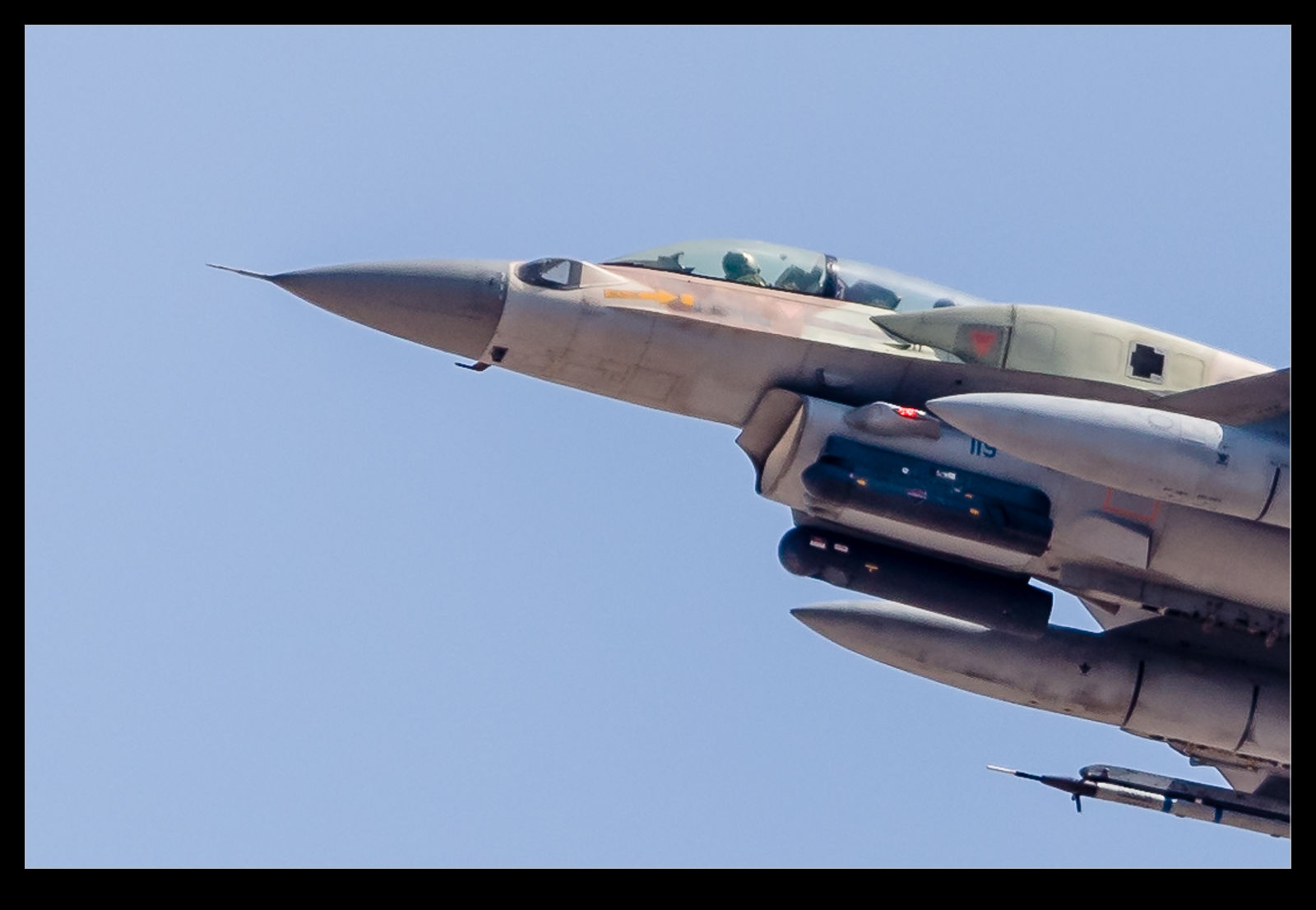 Lockheed Martin has been evolving the F-16 over the years. It has been massively transformed from the original F-16A (which was a big change from the YF-16) to the Block 50/52 version. The development of the F-16E/F for the UAE took the jet up another level. When the Israeli Air Force decided to buy an updated jet, they created the F-16I Sufa. A lot of local electronic systems are incorporated to the LM designed airframe.
Lockheed Martin has been evolving the F-16 over the years. It has been massively transformed from the original F-16A (which was a big change from the YF-16) to the Block 50/52 version. The development of the F-16E/F for the UAE took the jet up another level. When the Israeli Air Force decided to buy an updated jet, they created the F-16I Sufa. A lot of local electronic systems are incorporated to the LM designed airframe.
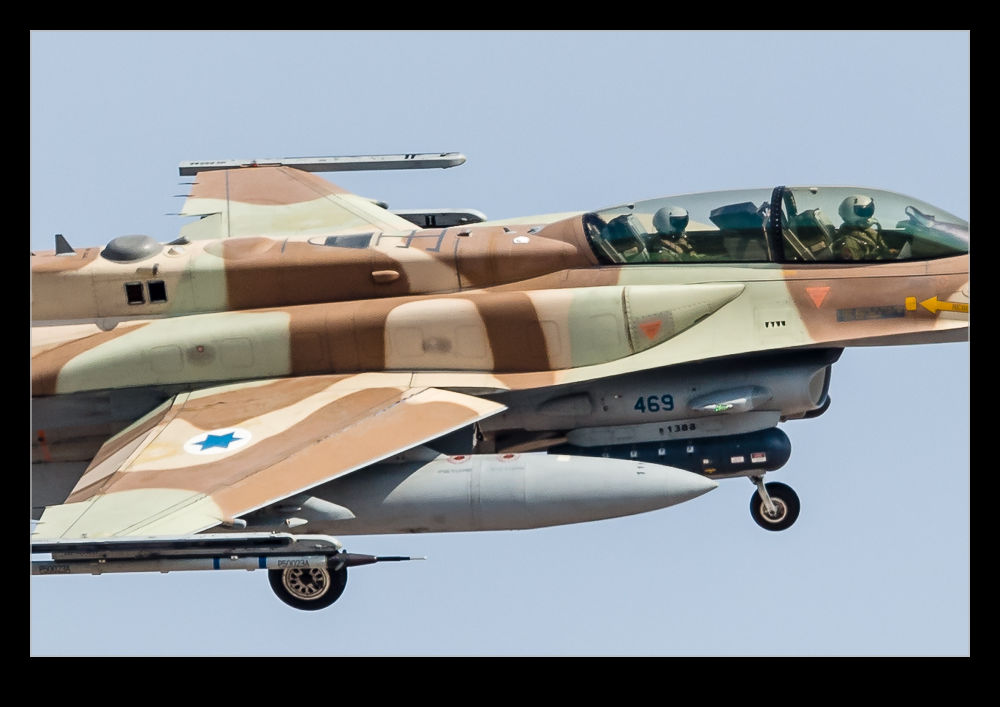 As you take a closer look at the airframe, you see all sorts of bits that are specific to the jet. The big spine is a common feature these days although it was pioneered on Israeli jets a long time ago. Aside from that, there is a circular antenna on the spine. On the sides of the inlets are some more antennae. Head back on the spine and some more side antennae seem to be present (although not on all of the jets I saw). Then there are sensors on the canopy (which I guess are related to helmet sighting systems). The jet is covered in devices. I assume there is a great system for integrating all of the information these sensors are gathering. The crew should have plenty of data to work with.
As you take a closer look at the airframe, you see all sorts of bits that are specific to the jet. The big spine is a common feature these days although it was pioneered on Israeli jets a long time ago. Aside from that, there is a circular antenna on the spine. On the sides of the inlets are some more antennae. Head back on the spine and some more side antennae seem to be present (although not on all of the jets I saw). Then there are sensors on the canopy (which I guess are related to helmet sighting systems). The jet is covered in devices. I assume there is a great system for integrating all of the information these sensors are gathering. The crew should have plenty of data to work with.
Grand Caravan Go Around – Thank-you
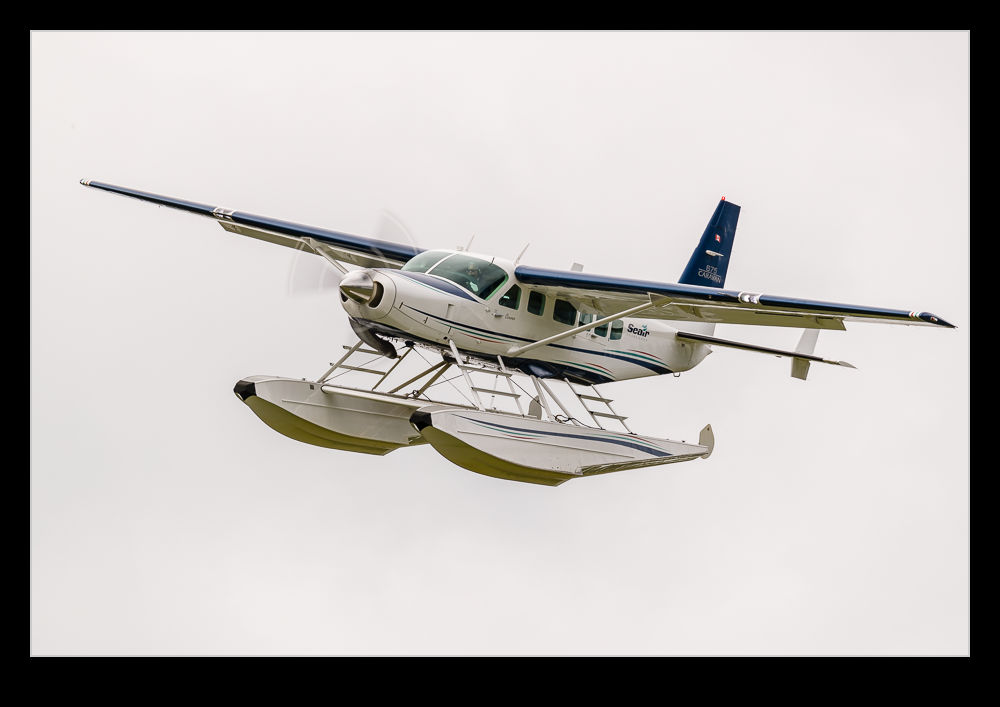 We spent a day in Stanley Park in Vancouver. This was not a day for photographing aircraft but there are so many operating in the area that it is hard to avoid. As we were walking along the shore, a Grand Caravan made an approach. I didn’t have the camera to hand so just watched it. Having made a dive at the final approach, it floated long (in the air, not on the water) and the pilot elected to go around. This gave me an opportunity to get the camera out.
We spent a day in Stanley Park in Vancouver. This was not a day for photographing aircraft but there are so many operating in the area that it is hard to avoid. As we were walking along the shore, a Grand Caravan made an approach. I didn’t have the camera to hand so just watched it. Having made a dive at the final approach, it floated long (in the air, not on the water) and the pilot elected to go around. This gave me an opportunity to get the camera out.
 Meanwhile, I could hear it coming around. It seemed rather loud for the approach path it had taken previously. Indeed, this time they took a path right across the bottom of the park. I got out from under a tree just in time to get some shots of it turning on to final. A far better angle than its first approach. Maybe the pilot deliberately went around because he knew what I wanted?
Meanwhile, I could hear it coming around. It seemed rather loud for the approach path it had taken previously. Indeed, this time they took a path right across the bottom of the park. I got out from under a tree just in time to get some shots of it turning on to final. A far better angle than its first approach. Maybe the pilot deliberately went around because he knew what I wanted?
Have You Been Playing in the Sand?
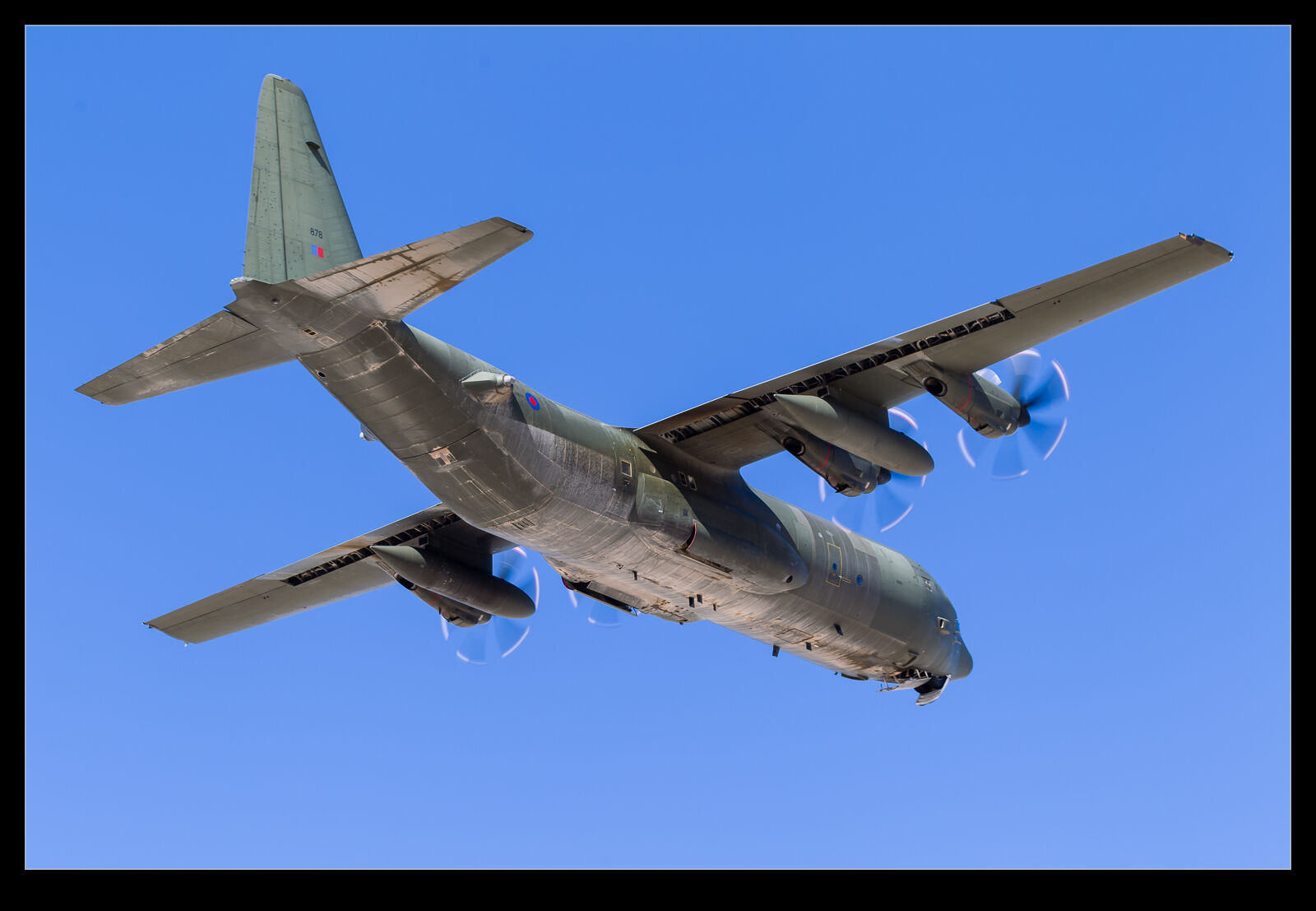 Red Flag may be well known for the fast jet activity but the jets aren’t the only ones that get to play. The transports also get to have a role. One of the exercises earlier this year included the U.K. RAF. They brought along a C-130 Hercules. I got to shoot it a couple of times. One thing that was clear as the aircraft took off was that the bottom of the fuselage was very dirty. I think it was safe to say that it had been landing on some rough strips somewhere out on the range.
Red Flag may be well known for the fast jet activity but the jets aren’t the only ones that get to play. The transports also get to have a role. One of the exercises earlier this year included the U.K. RAF. They brought along a C-130 Hercules. I got to shoot it a couple of times. One thing that was clear as the aircraft took off was that the bottom of the fuselage was very dirty. I think it was safe to say that it had been landing on some rough strips somewhere out on the range.
Dear Volga Dnepr, Please Choose Your Time Better
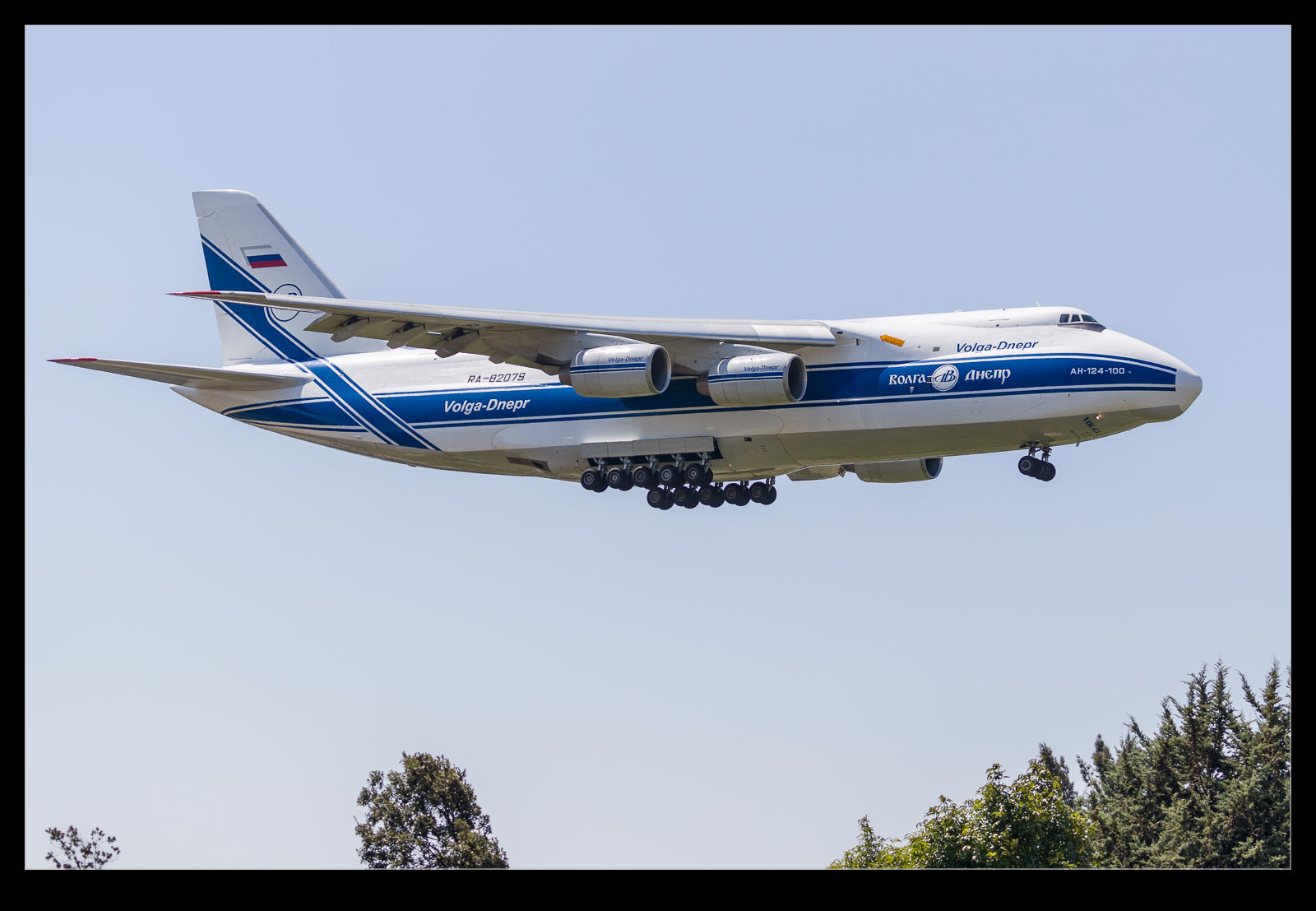 Moffett Field is located close to a couple of satellite manufacturing locations. When the time comes to ship the satellites to their launch location, the transport of choice is often the Antonov AN124. Twice, now, I have caught one of these huge aircraft coming in to pick up a payload. The most recent one resulted in getting these shots. The slightly annoying thing is that both times the plane came in in the middle of the day. This is the worst time for shooting at Moffett because the light is almost directly on the tail of the jet. Earlier or later would be fine. Oh well.
Moffett Field is located close to a couple of satellite manufacturing locations. When the time comes to ship the satellites to their launch location, the transport of choice is often the Antonov AN124. Twice, now, I have caught one of these huge aircraft coming in to pick up a payload. The most recent one resulted in getting these shots. The slightly annoying thing is that both times the plane came in in the middle of the day. This is the worst time for shooting at Moffett because the light is almost directly on the tail of the jet. Earlier or later would be fine. Oh well.
Sufas Finally Come Right
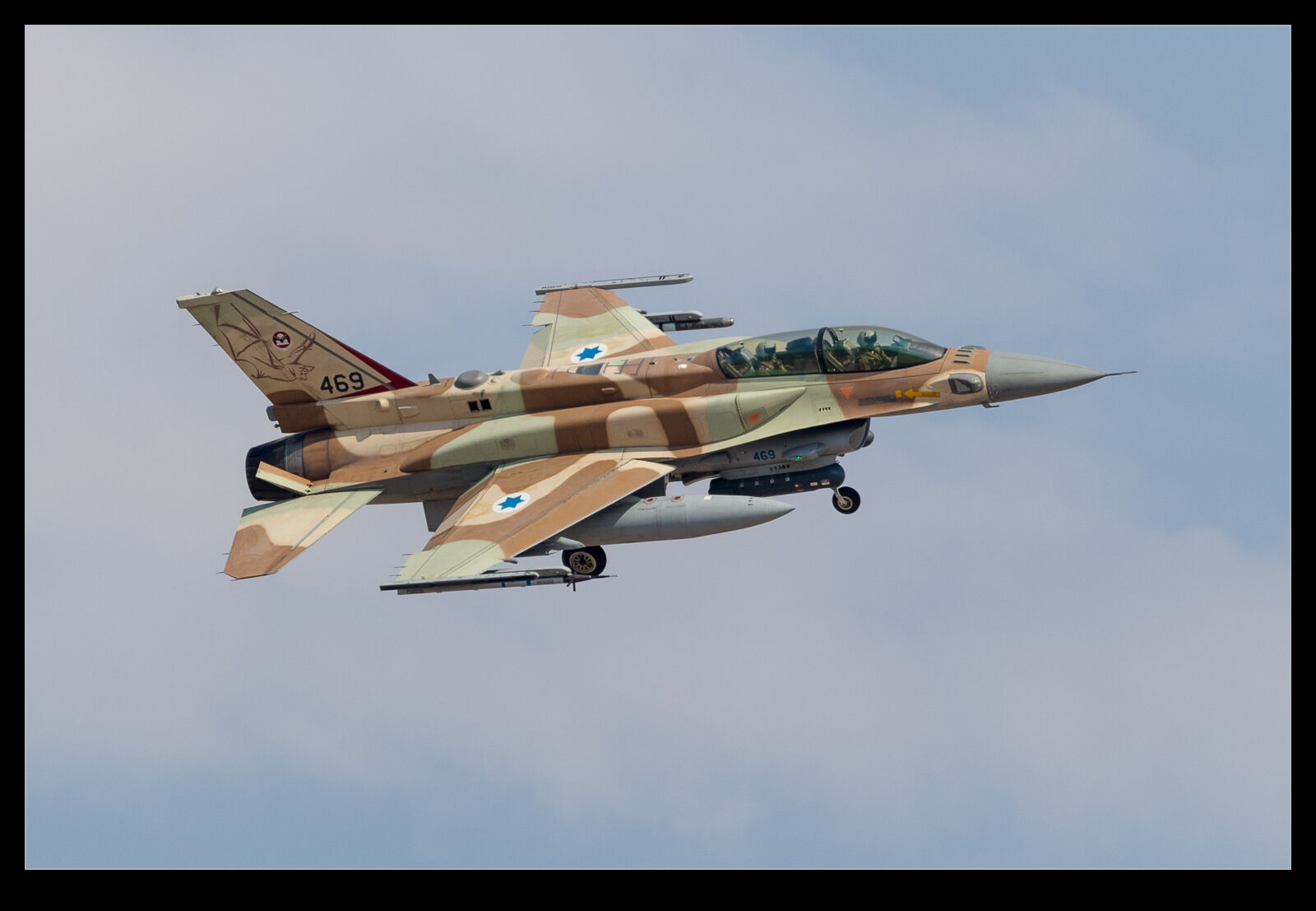 One of the big attractions of Red Flag 16-4 was the appearance of the F-16I jets of the Israeli Air Force. The Sufa is a variant of the F-16 that incorporates the conformal fuel tanks and a lot of local Israeli electronic equipment. In the days before I was there, the jets had been landing on the left runway which meant they broke away from the photographers and landed a fair distance away. When I was there, things changed.
One of the big attractions of Red Flag 16-4 was the appearance of the F-16I jets of the Israeli Air Force. The Sufa is a variant of the F-16 that incorporates the conformal fuel tanks and a lot of local Israeli electronic equipment. In the days before I was there, the jets had been landing on the left runway which meant they broke away from the photographers and landed a fair distance away. When I was there, things changed.
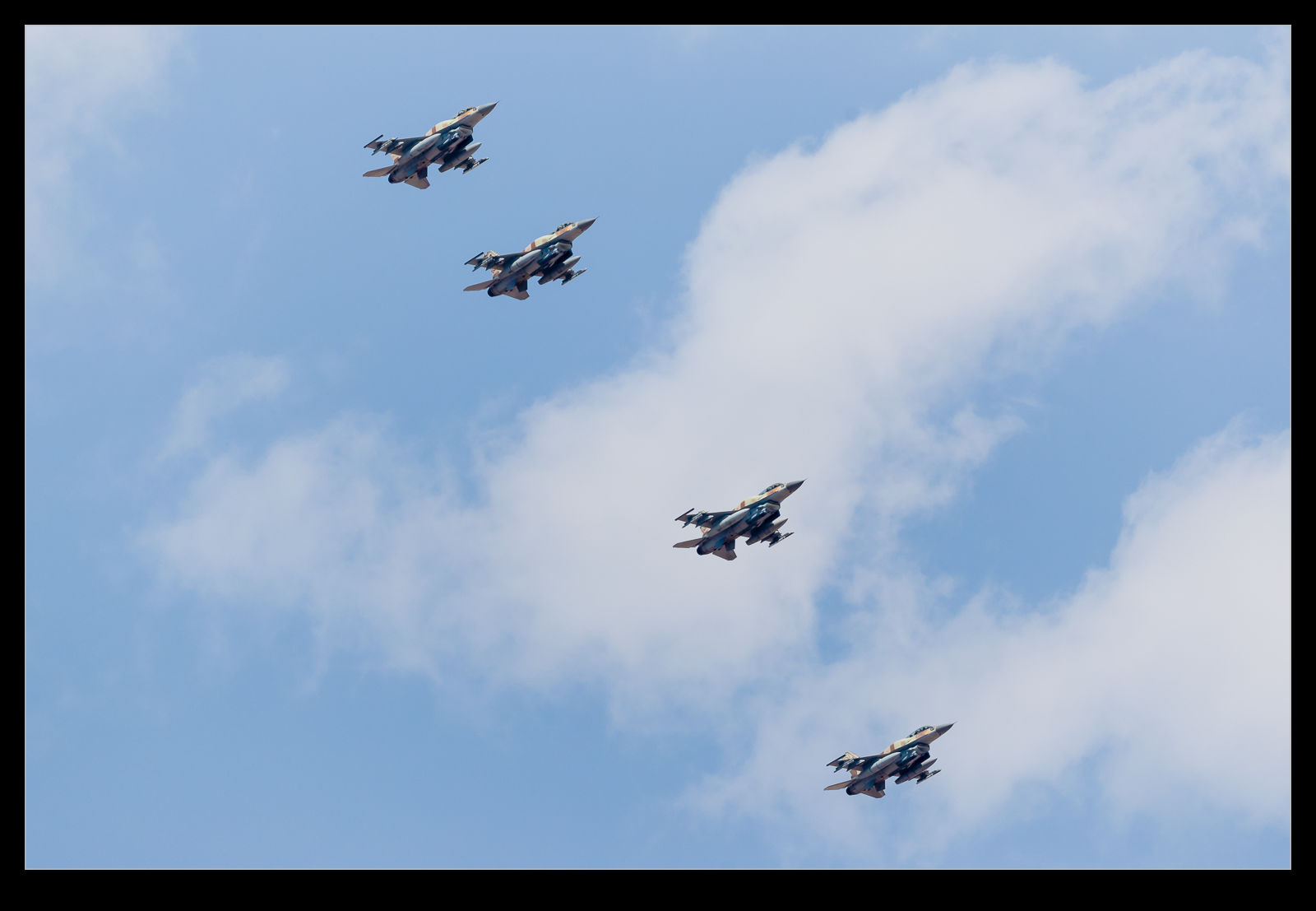 They started to come in with a right break for the right runway. This was really good news. It makes getting shots of them a lot easier. They didn’t fly very tight patterns so they were a little far away on the final turn but it was still better than if they went left. The departures were mainly from the far runway so they were a bit far then but it was still a good result for me.
They started to come in with a right break for the right runway. This was really good news. It makes getting shots of them a lot easier. They didn’t fly very tight patterns so they were a little far away on the final turn but it was still better than if they went left. The departures were mainly from the far runway so they were a bit far then but it was still a good result for me.
Grand Caravan is Not the Smoothest!
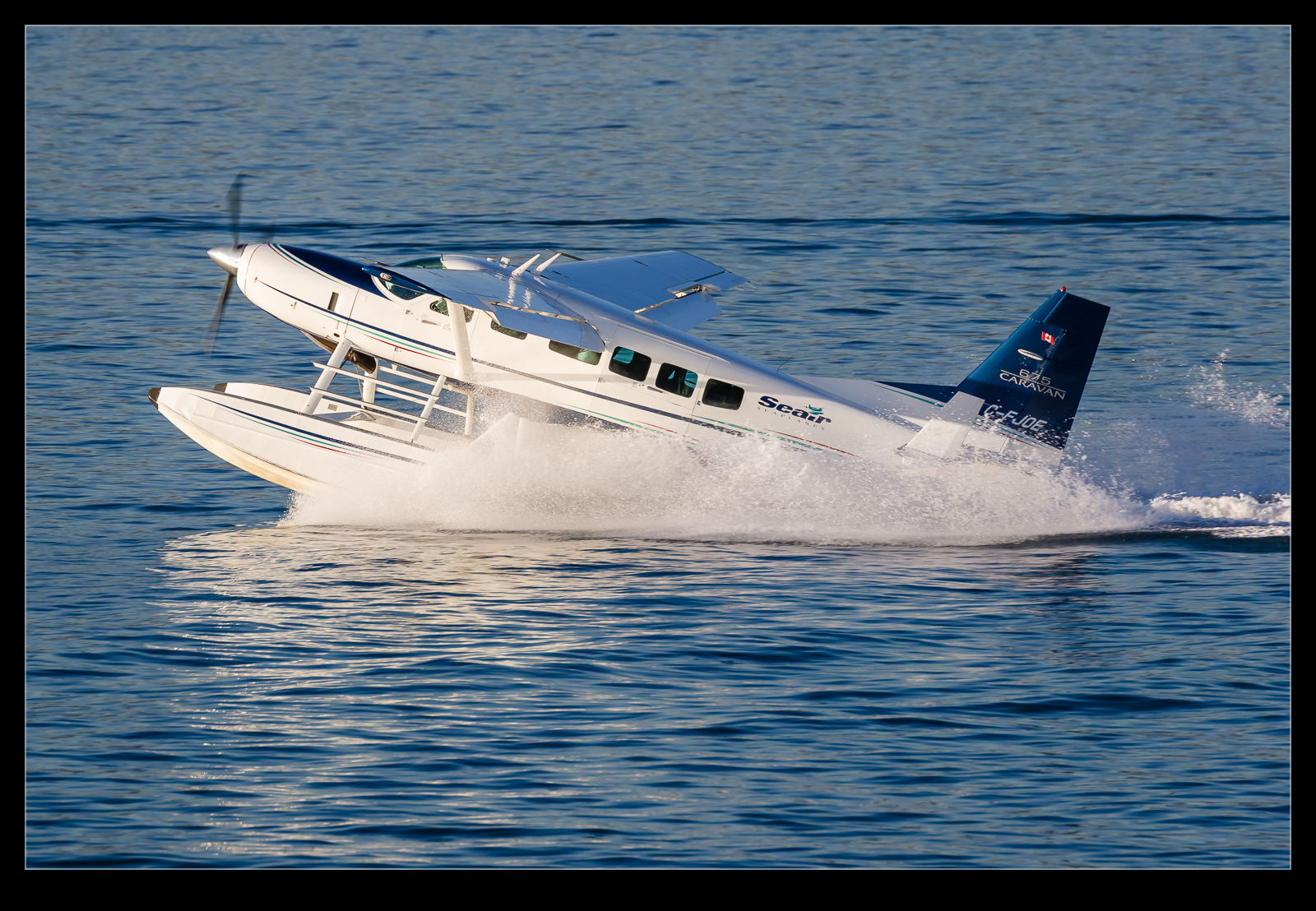 It might seem a bit absurd but, when watching all of the floatplane activity down in the harbor in Vancouver, you can get a bit used to the Otters and Beavers and hope for something a little different. One operator was using a Cessna Grand Caravan on floats and this got my interest. I saw it coming in on the approach and watched it all through the touchdown and slowing down to taxi speed.
It might seem a bit absurd but, when watching all of the floatplane activity down in the harbor in Vancouver, you can get a bit used to the Otters and Beavers and hope for something a little different. One operator was using a Cessna Grand Caravan on floats and this got my interest. I saw it coming in on the approach and watched it all through the touchdown and slowing down to taxi speed.
 The transition off the step and onto the floats did not seem to be a very smooth process. As the speed decayed, the aircraft pitched up and then oscillated between level and very nose high. The tail seemed to get very close to the water and there was plenty of spray. I have no idea whether this is the normal transition or whether this one got a bit out of sorts due to the conditions but it did no look like it would have been very comfortable inside. All was well, though. They flew out again a little while later with no issues.
The transition off the step and onto the floats did not seem to be a very smooth process. As the speed decayed, the aircraft pitched up and then oscillated between level and very nose high. The tail seemed to get very close to the water and there was plenty of spray. I have no idea whether this is the normal transition or whether this one got a bit out of sorts due to the conditions but it did no look like it would have been very comfortable inside. All was well, though. They flew out again a little while later with no issues.
Where Have the Twin Otters Gone?
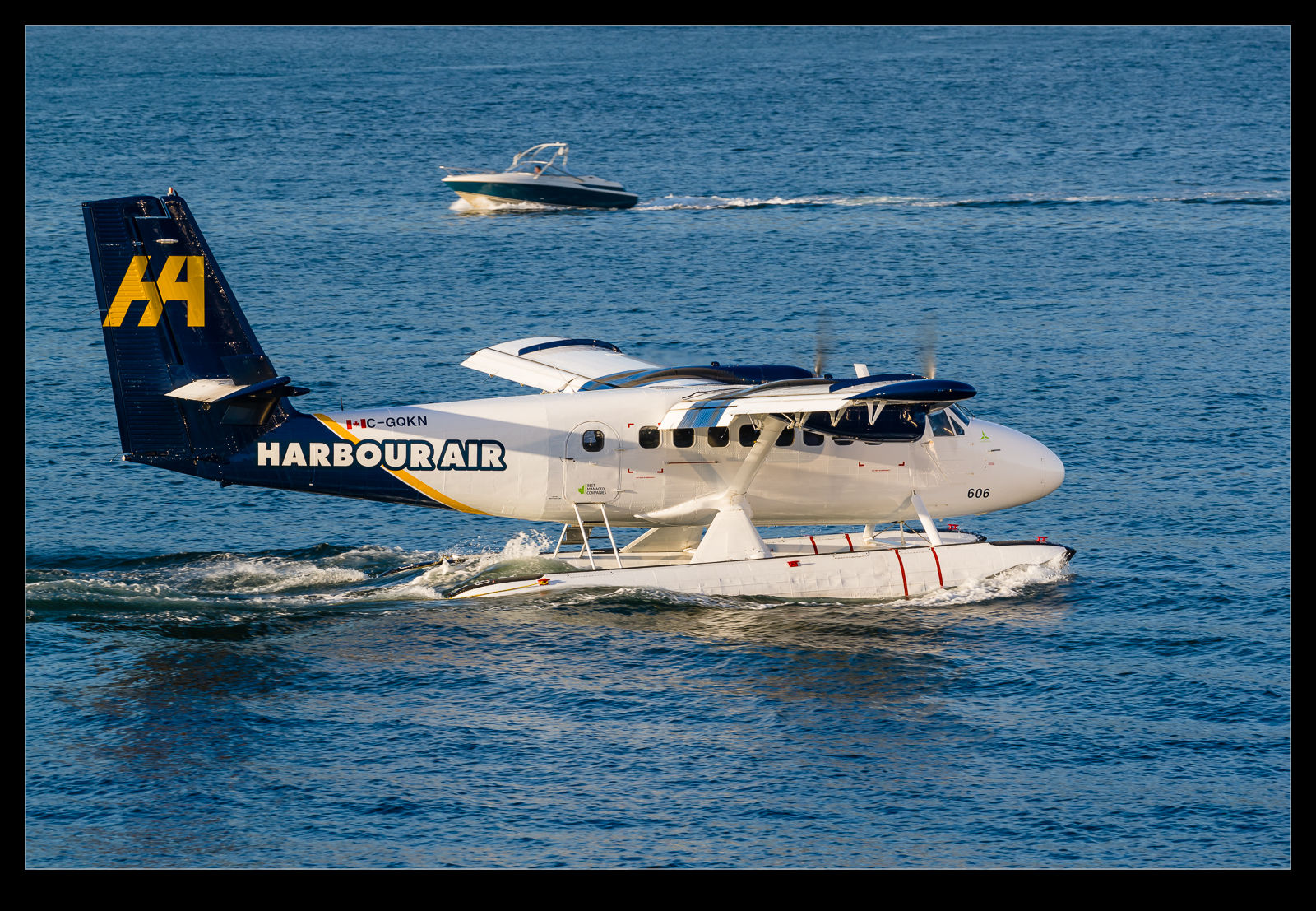 A few years ago we spent some time in Victoria on Vancouver Island. Victoria has a lot of floatplane activity and, at the time, an airline called West Coast Air was operating with a large fleet of Twin Otters. Since that time, West Coast was taken over by Harbour Air. Harbour Air is the dominant operator at Vancouver. However, while we were there, we saw only one Twin Otter. A check online seems to suggest that they have focused more on the Otters and Beavers and reduced the Twin Otter fleet. I assume they are not so economical for the type of operations they undertake but, if anyone has any more information about what happened, pleas let me know.
A few years ago we spent some time in Victoria on Vancouver Island. Victoria has a lot of floatplane activity and, at the time, an airline called West Coast Air was operating with a large fleet of Twin Otters. Since that time, West Coast was taken over by Harbour Air. Harbour Air is the dominant operator at Vancouver. However, while we were there, we saw only one Twin Otter. A check online seems to suggest that they have focused more on the Otters and Beavers and reduced the Twin Otter fleet. I assume they are not so economical for the type of operations they undertake but, if anyone has any more information about what happened, pleas let me know.
